Innovation Reduction Act: Price Controls’ Prescription for New Therapies
/0 Comments/in Featured, Podcast Hubwonk /by Editorial StaffJoe Selvaggi talks with Pioneer Institute’s senior fellow Dr. Bill Smith about the changes to drug pricing laws included in the recently passed Inflation Reduction Act provisions and discuss who wins and loses as drug companies announce their response to new law.
Guest:

William S. Smith is Visiting Fellow in Life Sciences at Pioneer Institute. He has 25 years of experience in government and in corporate roles, including as vice president of public affairs and policy at Pfizer, and as a consultant to major pharmaceutical, biotechnology and medical device companies. He held senior staff positions for the
Republican House leadership on Capitol Hill, the White House, and in the Massachusetts Governor’s office. He is affiliated as research fellow and managing director with the Center for the Study of Statesmanship at The Catholic University of America (CUA), where he earned his PhD.
WATCH:
Get new episodes of Hubwonk in your inbox!
Read a transcript here
Please excuse typos
Joe Selvaggi:
This is Hub Wonk. I’m Joe Selvaggi.
To Hubwonk, a podcast of Pioneer Institute of Think Tank In Boston, there’s longwinded temptation for politicians to use price controls to try to make goods and services less costly for constituents. Such was the case for the recently passed Inflation Reduction Act (IRA), which sought to control drug costs by imposing price limits on many of the drugs used by Medicare and Medicaid patients, and reducing the patent duration enjoyed by certain new drugs before going generic. This feature of the new law promised to make new drugs more affordable and reduce the federal budget deficit by 237 billion over the next 10 years. Not surprisingly, before the implementation of the new law, drug manufacturers warned that these interventions would reduce their ability to fund new research slowing the rate of new drug discoveries, thereby harming healthcare consumers in the long run, unpersuaded by their claims. The hundred and 17th Congress passed the IRA into law in late 2022.
Now, several months later, policymakers and industry analysts can assess whether indeed drug firms are reacting to the new law. What, if any, is the nature and magnitude of Big Pharma’s response, and which drugs and patients are most likely to be affected by any change? My guest today is Senior Fellow and Director of the Pioneers Life Science Institute, Dr. Bill Smith. Dr. Smith will explain the changes to incentives brought by the Inflation Reduction Act and share how many of the largest pharmaceutical firms have already begun to shift their business focus and change the way they invest in new drug discovery research. When I return, I’ll be joined by Pioneer Institute’s Senior fellow Dr. Bill Smith.
Okay, we’re back. This is Hub Wonk. I’m Joe Selvaggi, and I’m now pleased to be joined again by Bill Smith, who is Senior Fellow and Director of Pioneer Life Science Initiative. Today we’re gonna be talking about the effects of the Inflation Reduction Act on new drug development. I wanna have you back to the podcast because you and I have discussed in earlier episodes the risk associated with changing the way drug development companies price their products. Our last Congress didn’t heed our warnings and passed the Inflation Reduction Act anyway. Perhaps they’re not listeners of Hubwonk but we now have enough information since the Inflation Reduction Act was passed to see what the response was by the large drug manufacturing companies. With our conversation, it’s my hope that we’ll both address this particular issue, but also offer our listeners a lesson in real world economics that perhaps they can apply to other policy areas. So let’s start with what happened. The Inflation Reduction Act made several changes to the way drug companies get paid. I wanna first focus on the changes made to certain types of drugs called small molecule drugs. Describe what small molecule drugs do so we can understand what types of new drugs are affected, and of course, which, which ones are not affected.
William Smith:
Small molecules are, are the kind of pill you would get at the pharmacy. They would come in into the yellow bottle, and they’re in pill form. And, and that’s different than a biologic or a large molecule, which might be made from living from living end enzymes or, or living tissue. And it, it’s a larger molecule. It’s more complicated. And so, and small molecules have their advantages. A small molecule can get to parts in the body that a large molecule may not be able to. There’s something called the brain blood membrane that, that a small molecule is more easily cross can easily, more easily cross. And so small molecules work better on things like cancer certain diseases where you have to get through this membrane and get to the tumor. And so the, the Inflation Reduction Act makes a distinction between these two types of drugs. It, it, for the first time puts price controls in effect into the Medicare program, both part B and part D. Part D is for drugs you typically get in the pharmacy. Part B is drugs that might be infused or injected in a hospital or a doctor’s office. But nonetheless, all drugs in the Medicare program now may be subject to some kind of price controls, but the bill goes further than that and, and actually makes a distinction between large and small molecules. For small molecules, the bill allows.
Joe Selvaggi:
Bill, I I wanna unpack your, you’re, you’ve given our listeners a lot and you’re, you’re always knee deep in this, this topic, but some of our listeners, you know, this may be their first introduction to these concepts. So I wanna make it simple for them to understand the distinction you’ve said. We have small molecules. Those are largely gonna be, perhaps I’ll generalize, injectable large molecules you’ll see in, in pill form.
William Smith:
The Opposite.
Joe Selvaggi:
I’ve got the reverse right. Small molecules are the pills and the large molecules are injectable. And so most of our, the changes affect those small molecules. And you say they have, they have special usage. We, they’re not interchangeable. We can’t do everything with both small and large. Small has a particular benefit. You mentioned the blood-brain barrier. What kind of therapies do small molecules target? Let’s say we’re talk obviously something in the brain. I’ll, I’ll, we’ll acknowledge that. What about some things like, say, perhaps cancers? Is, is it particularly useful for those?
William Smith:
It, it is because you have to cross that brain blood barrier to get to get to a cancerous cell. And so small molecules can be more effective on cancer. And, and we have seen since they decided to put price controls on the small molecules sooner than on large molecules. If you’re on the market for nine years as a small molecule, now you can be price controlled.
Joe Selvaggi:
And so, I wanna unpack this concept too, because again we’ll start with the basic terms and we talk about price controls. Let, let’s start with the very basic. When I’m a drug company and I develop a new, new drug, the government gives me something called a patent, which effectively offers me a monopoly. I have the right, because I invented it, I made something out of nothing, right? And I had the right to sell it on the market at a price I wanna sell it at. So I have a certain amount of time that I can enjoy, enjoy that patent, and then it becomes common, common property. And someone can make a generic of my drug, but that’s a, a period of time. Say more. Why are drug companies granted this monopoly? What, what, what is the value of that?
William Smith:
Well, <laugh>, it’s simple. You wanna protect the inventions of inventors because if you don’t, if, if somebody can copy the invention the moment it comes out and sell it, there’s no incentive to create inventions. So a patent gives for a limited period of time when it comes to drugs, you get a 20 year patent, and many times the patents are put on the molecule during the r and d process. So you don’t get 20 years of patented sales, you might get 15 years of patented sales because it takes five years or more to get through the r and d process, and you’ve already put a patent on it. So, patents of patents are the protection that you give to inventors for inventing new things.
Joe Selvaggi:
So the, the protection is so that you have an incentive to create new inventions, right? You say, okay, your reward for this creation is going to be, you know, perhaps make a lot of money, but for a short period of time, we wanna have essentially a, a prize, if you will, for, for a reward for developing something new. And it’s, it’s a finite time, you said 20 years for, for a drug. And this is where I wanna tie our first concept to our second concept, which is the government in the IRA has decided to make a distinction between the time we can enjoy a patent for large molecules and the time we can enjoy a patent for small molecules. Say more about that detail.
William Smith:
Yeah. So with a small molecule under the ira, if you’ve been on the market nine years, the government can then inflict price controls on your drug. For large molecules, they have to wait 13 years. So there’s a four year difference in the, in the likelihood of getting price controls put on your drug, which is going to have, have consequences in the real world. I mean, drug companies now are gonna look at their portfolio and they’re gonna say, well, wait a minute, we should be looking at large molecules because we’re gonna get more patent life and we’re gonna get more cash from that, that type of invention.
Joe Selvaggi:
Now, now Billy, this is, this is your field of study. You’ve come from the world of big, big pharma. Don’t all, when we, we talk about portfolios, are there some companies that only do small and some others that do only large? Or does a large company like, like a Pfizer look at its development options and say, look, I’ve got a, a, a stable of, of big and stable small and, and then make their priorities relative to the likely return on each? Say more about
William Smith:
That. Precisely. Yeah. A large company, you know, the top 20 drug companies are gonna have portfolios of both large and small molecules, and they’re gonna make decisions about what the return on the investment’s gonna be. If you sink money into a small molecule research program, you’re gonna figure, oh, well, we might have nine years on the market, and then it goes away, the patent goes away, and, and the, the government could, could knock the price down to almost nothing. And so we might not see a return on that drug. So you, let’s, let’s look at more seriously at the large molecule research projects, because they’re gonna be more profitable over the long run. We’re gonna have four more years of, of market-based pricing for that particular product as opposed to price controls.
Joe Selvaggi:
So, so Bill, let me, let me push back and let’s say, okay I’ve got choices big or small, but at the end of the day, I’m still making a lot of money. Like, why is it that I need so many years so much money you know, nine years is still a lot. Why is it so much different than 13 years? Why, why would that affect how what I decide to develop?
William Smith:
Well, if you’re gonna have a successful drug, you have to, one, you have to pay back the money that you’ve spent on the r and d for that particular drug and, and that the r and d on a particular drug can cost in the billions of dollars. So you have to pay that back. You also have to pay back all of the research projects that went south that didn’t work out. And you had, you canceled them. You might have spent hundreds of millions of dollars on drugs that got into trials and didn’t work. So you have to pay, pay those back. So the longer you can stretch out the patent life, the better. Because you’re, you’re aggressively working to make up for all these research projects, some that were successful and some that were failures. And you know, if you, you arbitrarily limit the patent life, it’s just like anything else, you know, we can talk about the details of the IRA, but Joe, we should step back and just talk about price controls generally.
Joe Selvaggi:
You know, everybody’s complaining about the price of eggs, and if we, if the government came down and said a dozen eggs can, no, you can’t charge more than a dollar for a dozen eggs. What would happen? Eggs would go away. We’d have a shortage of eggs. Nobody would produce eggs because it’s too expensive to buy the chickens and to feed ’em. And, and, and there’s bird flu out there. And, and nobody’s gonna, nobody’s gonna make those eggs. And and the same is true with these small molecule drugs. You put price controls on ’em, you’re gonna have fewer of them. That, that’s just, that’s just the reality.
So, so I, I want to sort of you know, let’s imagine you and I are, I dunno, fruit researchers and we have apples and orange, and we can have a new variety of, of an apple or a new variety of an orange. And if I can enjoy, let’s say 13 years of price freedom for with my apples and only nine with my oranges, I’m gonna make new apples and at least fewer, if not no longer make any new or spend time developing new
William Smith:
Orange. Yes, you’re gonna be planting apple orchards. You’re not gonna be planting orange orchards.
Joe Selvaggi:
Okay. Alright. Is it possible well, you and I have talked about in theory how this would work. But I wanna get more into the specifics. So if we took a time machine and went back a year, you and I would have it, let’s say a theoretical economics discussion on what’s the likely impact of, of, of the I r A. So now we’re, we’re less than six months beyond its passage. So now we can actually look and take a survey of the industry and say, did what we predict happen or is this a lot of posturing by drug companies that want to make more money than they deserve? Right? You and I predict it, but who knows what the real world will happen? So let’s, let’s dive down. This is your area of expertise. You’re the one analyzing what’s going on in the in the drug. You know, universe, share with me some examples of, if any OB observed changes in the way drug companies are allocating their resources and committing their research energy.
William Smith:
Yeah, so I mean, right out of the box, Eli Lilly, which is one of the premier oncology companies in the world, canceled a small molecule drug project for a blood cancer drug because they didn’t think they’d get the return. And they explicitly said in their press release on canceling this research project, it’s due to the fact that the IRA will likely make the return on this drug not as profitable for us. We we’re gonna move on to other, other projects. And, and we’ve seen a number of other companies, Novartis, which is a top 10 drug company in the world and makes oncology drugs and, and Alchemies, which is a local Boston biotech company, they’re all saying, we’re reviewing our portfolios and we may be favoring large molecules and not smaller molecules. So I think the predictions we made <laugh> are coming, coming to, to the bear because they’re, they’re canceling drug projects that for small molecule drugs, particularly in the cancer area. And, and this is troubling.
Joe Selvaggi:
Well, I wanna cite one thing. It was an article you had brought to my attention. It was a, a quotation from the head of the CEO of Alkermes. Richard Pops, when he was talking with analysts you know, I’ll quote what he said he, he’s actually spinning off a cancer drug research firm. He is sort of saying, we, we don’t want it anymore. We’re gonna spin it off. He said, quote, it’s been reckon that the difference between 13 and nine years is about 50% of the total cash on cash from a revenue perspective. So in other words, you know, the projected revenue, when you cut it in half, it may be negative. In other words, you’re not just making less, you might not make anything on it, so it’s not worth it. And of, of course, firms are accountable to shareholders. They can’t just do it because it’s fun. It has to have some return. And literally from the CEO’s mouth, we’re not doing this anymore.
William Smith:
Yeah, I know. I, the, the r and d process is a very sophisticated process, and it involves science, but it also involves business <laugh>. You know, when, when they’re looking at projects and which projects, research projects they’re gonna fund, they’re looking at the return, they’re looking at the therapeutic area and what the reimbursement is likely for this drug over the course of its life. And they know which ones are potential money makers and which ones are not. And what the I RRA is doing is tipping the scale enormously against small molecule drugs, making them far less cash attractive for these firms. And they’ll run the numbers. They’ll, they’ll, they’ll do the numbers and, and they’ll cancel the small molecule projects with, they don’t look profitable.
Joe Selvaggi:
Well, I’ll talk about another example you sent me along, I, I, which I thought was very interesting. Novartis’s had, has a lot of what they call R N A drugs. And I think these are interesting to listeners. We, we saw the power of mRNA vaccines that were rolled out that wasn’t just a different kind of vaccine, it was a different platform. It was a different way of, of solving virus a platform, if you will. Yes. And Novartis was saying, look, we’re looking down to this whole new platform not just a new drug, but a new way of building drugs or, or creating drugs. We’re, we’re, we’re gonna move away from it, because though it may be promising, and though if we do find the way there, it will, I mean, huge returns, it’s just not worth it in, you know, in, in our projected return. Say more about the idea that you won’t even develop new platforms if they’re sort of targeting small molecule outcomes.
William Smith:
Yeah, Novartis actually, they, the r and d person who was quoted in this article from Novartis pointed to drugs called radio ligands. These are drugs that, that the molecule carries along with it a radioactive molecule, so that if it finds the, the tumor, it, it puts radioactivity right on top of the tumor. Now, these drugs are the latest cutting edge research, but they’re considered small molecules, which means they could be price controlled within nine years. And Novartis seemed to be saying, we’re, we’re gonna look at these less we’re gonna, these projects are not gonna be as profitable for us. So we might, we might not go with these radioligands. We, we might, we might go somewhere else and we might stress biologics and larger molecule research projects. And this is, this is just, this is just bad. You want, you want a level playing field between small and large molecules because you want to bring the, bring the best medicines to the fore, right? You don’t want to discourage one type of molecule if they’re, they’re very promising. And that’s precisely what the IRA does.
Joe Selvaggi:
So I’ll say again, with, with the inflation reduction act, you know, the, the intent of these controls is frankly something you and I both love is, which is we hope the government spends our money more wisely or spends wastes less of it. So the stated intent of, of these price controls is to have the government spend less money, particularly on the, the patients it pays for, which are primarily older people who enjoy Medicaid or Medicare. So this is particularly targeted to those drugs that older people will use. So let’s kind of connect some dots here. If this is deliberately intended to target these price controls, target drugs that are developed for the benefit of older or diseases that affect older people, what’s the likely outcome of having less attention directed towards older diseases that affect older people?
William Smith:
Well, well, one, one would expect, and I think one can <laugh> pretty much count on this, that research projects that target childhood cancers are gonna be seen as more valuable than those projects that target cancers for older Americans. There’s just, there’s no doubt about that because young people are not on the Medicare program. So that drug is not gonna get price controlled. Whereas a drug for an elderly patient that, that’s in the Medicare program, that drug could end up getting price controlled. So you’re gonna see the incentives for research move towards younger patients younger and younger patients, and away from Medicare patients, which is not a good thing either. That’s, that’s not a good thing. You don’t wanna just make drugs for young people. So this, this has all sorts of unintended consequences that that the Congress did not think through when they passed this law aw. And one small smaller detail, and I don’t know how much you think this affects the industry that there is a carve out for small molecules that affect a single I, I think what the intended purpose of this was so-called orphan drugs, these rare diseases that, you know, we, we developed one therapy and it targets that one, one disease, but if that drug affects or can improve the outcome of two diseases, it’s no longer exempt. What, what’s the unintended consequence of, of that provision of, of essentially a narrow carve out for orphan drugs that that goes away if you, you use it for other therapies,
Joe Selvaggi:
That, that’s just a terrible provision. And once again, it’s a provision that will throttle cancer re research, because many cancer drugs get on the market with a single indication. Say you get it for lung cancer, you get, you get f d a approval, but then you know what the mechanism of action is on, on the lung cancer. So it, we, you think, oh, this might work on prostate cancer also, this might work on other cancers, but the in, there’s no incentive now to go into trials and get that second indication, because once you get that second indication, you’re subject to price controls. So we’ve already seen drugs out there, not cancer drugs, but we’ve seen drugs out there that could have gotten a second indication for rare diseases that the company chose not to move forward because they would lose their exemption to price controls if they had pursued more trials and trying to get a second indication. This is just, this is just a, a way to limit our knowledge of medical science.
Joe Selvaggi:
Indeed. I wanna sort of generalize. So it’s pretty clear that what we’re trying to do, and let, let’s give credit where credit is due. A well-intentioned policymaker says, look, we’re spending too darn much on drugs. Let’s see what we can do about it. And what, you know, intuitively, we say, well, we pay too much. Let’s, let’s limit how much we have to pay and impose price controls. For me, this is sort of intuitively where we, where a lot of people make, make an error where they think if the government imposed a price control, my life would be better. I’d have to pay less. I wanna generalize, I promise. At the top of the show, we would, you know, offer listeners just some basic economics. For me, this a good, analog, and it’s top of mind for me recently is that I you know, roughly a hundred percent of our listeners wish they paid less in rent.
And they might appeal to government to say, look, help me out here may impose a limit on how much my landlord can raise my rent. We know that to be called rent control. The government well-intentioned says, oh, you can only raise rent so much. And so what are the unintended consequences? You mentioned it like, like with eggs, if you can’t raise rent, you are disincentivized to, to develop new property to improve the property you have. And so, whereas it’s well-intentioned to limit rent increases, it has the effect of having fewer properties to rent, and those properties that are available are lower quality. To me, this is the same as, as a drug, you wish the drug were less you impose a price control. And the effect is what we have now is frozen in amber and new development is, is, is comes to a screeching hal. Do, do you have similar sort of, you know stories where whereby you see well-intentioned government intervention having the opposite of its intended effect?
William Smith:
Yeah, no, I, I’m very pessimistic about this IRA law because of its effect on r and d and research. And, and I think policymakers have, have missed the boat. The reason that drug prices resonate as an issue with the consumers out there, and maybe some of the listeners on this show is because out-of-pocket costs, under health plans have been growing and growing and growing, and you have about one or 2% of patients that might get a very expensive rare disease drug because they have a rare cancer or they have someone, and that they’re, they’re required in some cases to shell out 5, 6, 7, $8,000 to pay for that drug before their insurance even kicks in. So we’re not seeing a crisis of drug prices. Rising drug prices actually have been dropping for the last five years. Now, 20 years ago, I couldn’t say that there, there were a lot of new drugs and they were expensive, and they were making a big difference on, on healthcare budgets.
That’s not the case anymore. Drugs, drug prices are down, down, down, and they have been for five years, and in part that’s happening because of the patent system, they’re over the next five years, we’re gonna save 140 billion on our, our healthcare budget because drugs have gone off patent and they’re gonna go generic, and they’re gonna get very cheap. And we we’re now seeing biosimilars come into the market, which are copies of, of large molecule drugs, and they’re gonna save 40 billion over the next few years. So it, I don’t see a crisis of drug prices. I see a, an out-of-pocket problem for a small number of patients, and we certainly should try to help those patients because th this out-of-pocket problem is a genuine problem. If you get prescribed a very expensive specialty drug for a rare cancer or arthritis or some other condition, and you have a high deductible health plan, you’re gonna be paying a lot of money out of pocket. And, and and that’s why the drug pricing issue resonates with a lot of people. But prices are not rising. They’re just not.
Joe Selvaggi:
But let me, let me also say then let let, let’s play this out. I have a rare cancer and a very expensive therapy, and it’s natural to say, I wish I didn’t have to pay so much. The alternative though, is in an parallel universe, the price is controlled. The therapy is never investigated and the drug doesn’t exist. So your choice is in between an expensive therapy and a cheap therapy, your expensive, it’s between an expensive therapy and no therapy. Yeah. It, it seems to me, again, when I’ve had very let’s say lengthy policy discussions, again with my professors back to the Kennedy School they would look at me kind of quizzically and say, you know, look, we’ve, we’ve invented just about everything. Let’s just figure out how we can make it available to everyone.
Let’s, let’s figure out how we can push a button and make everything that is now available free to everyone on earth. And I say, that’s fine, but of course, you know, it will mean an end to research and development. And they will even accept that. They’ll say, yeah, you’re probably right. But you know, we’ve got just about everything we need just about now. And I’d say, what if we took that policy choice 100 years ago? What would we have? We would have nothing. Your doctor would give you his best wishes and send you home. You would have nothing. And if we aspire to to cure the, the worst diseases of the world, we need to provide a healthy incentive for its new, new development. I don’t know. Am I going on a rant too much?
William Smith:
You’re, you’re precisely right. I mean, if, if you wanted to cut drug prices by 99%, you could do that in the, in the blink of an eye. Just get rid of the patent system and make all drugs generic so that every branded drug out there, the prices, it could be copied cheaply and sold cheaply. That would be a magic way to make, make drugs very, very cheap. The downside, of course, is no one will invent a new drug if you’re not gonna have, if, if it can, it’s gonna be copied the immediately after you invent it, then why bother, why bother investing all that research and spending all that money to, to get, to get to a cure? So, you know, we decided in the US like it, or unlike it, some, some Kennedy school professors may not like it, but we’ve decided that you put a patent on a a you give a patent to an inventor for a limited period, and then when that patent expires, the invention gets very, very cheap cuz it could be copied by others. And that’s the world that we’ve, we’ve created for drugs in the United States. They have a 20 year patent, they can be expensive when they go off patent, they’re very cheap, sometimes even pennies for a pill. So if you don’t like that system, propose something else. But you can’t you can’t dismiss the concern that if you, you price control all these drugs and you push the prices down artificially using government regulations, that these drugs will go away and new drugs will go away. There’s just no doubt about that.
Joe Selvaggi:
In indeed, you can ignore the laws of economics, but you can’t ignore the consequences of ignoring the laws of economics. Correct. As you say, there will be no new drugs if we go down this path too.
William Smith:
You know, I, I, when I think about the drug business, I think about electricity transmission. And years ago in, in its wisdom, the, the government decided, hey, electricity is a right. Everybody should get it cheap. And, and we should have these electric utility boards that control the prices that people have to pay. And that’s what we did as a nation. We stepped in and we controlled the price of electricity through government regulation. And if you now look at a telephone pole that carries power wires on it, it’s no different from p telephone pole in the 1920s. They look identical because the technology hasn’t advanced that far because there’s no reason to, to put money into research because all the prices are controlled. And if you’d wanna do that with drug technology, you’re gonna, you’re not gonna get new inventions. That’s just the way it is.
Joe Selvaggi:
And indeed, if we’re gonna editorialize here, my favorite example is I I was around when the wall came down in, in in Germany, it was West Germany and East Germany. This is Germany, right? A place that loves its machines, loves cars. And when the wall first came down and I went to the east side, I saw these cars called Trabant they looked like antiques, <laugh>, yeah. They were literally 50 year old model two-stroke tiny cars, that’s blue, blue smoke out the back and, and, you know, had about 40 horsepower. I said, well, the East Germans are Germans and the West Germans are Germans. And you walk across the wall to the other side and you see Mercedes-Benz and, and BMWs and, and Audis. And you say, oh, you know, what was the difference? And what happened on the, the East German side is they said, look you can only charge so much for a car and everyone’s guaranteed a car.
And the result was again, car technology was frozen in amber and everyone had to wait three months to, or three years to get a new car. Yep. So you got a guaranteed car, but it was terrible and you had to wait a long time for it. I think, you know, again, we, we can, we can come up with innumerable number of examples of what happens. I, in nightmare scenarios when you set price controls and make guarantees that everyone has access, but in, in the end we’ll all proverbially be driving TRAs when the, when the government intervene.
Yeah. And, and, and what’s disappointing in the drug world is that we are on the precipice of some great breakthroughs. We’re gonna start applying artificial intelligence, quantum computing, and a whole bunch of emerging technologies are gonna soon be applied to drug discovery, and it’s gonna open up a whole new world of cures. And just as this moment is happening, we’re inflicting price controls on the industry and, and we’re gonna, we’re gonna get shortages because of it. That’s, that’s, it’s very disappointing because the science is just so amazing that’s happening now.
William Smith:
I was just gonna say the last thing you want to do is depress this this renaissance of scientific knowledge.
Joe Selvaggi:
In indeed and, and particularly here in Boston. We were talking in on a broad sense, as we are all have people who can get sick and have terrible diseases and need expensive therapies. But on the other side, we have a, a, a local industry that one only needs to look across the river to Cambridge and see all these wonderful new buildings with drug companies on top. We are locally the beneficiary of all this wonderful new breakthrough technology. So let me we’re getting close to the end of our time together. So we’ve kind of laid out this situation for our listeners but we are not just a think tank or a do tank or a thinking do tank. What could listeners do if they really were inspired by this conversation to, to, to reach out to their legislator to say, listen, though I’d love my drug prices to be lower. Maybe we should rethink some of these provisions.
William Smith:
Yeah, I think the, the, the provision that troubles me the most is the disparity between small molecule and, and large molecule drugs and being able to price control small molecules faster. I think that creates an enormous distortion, an enormous disincentive for researching small molecule drugs which have enormous promise in cancer and other diseases. And, and you ought to be talking to your member of Congress, particularly if you’re in the industry and you know how debilitating these provisions are. And, and you should be saying no level, the playing field, it should be 13 years for each. There should be no difference between these, these types of molecules because you are skewing research artificially.
Joe Selvaggi:
Indeed. Well, that’s a, a great way to I think activate our listeners and say, listen you know, we, we, we want you to help us. But this, this ain’t doing it. This is we’re moving in the other direction. So thank you for your time today, bill. Your expertise is always welcome on the show, and you help our listeners understand things a little better.
William Smith:
My pleasure. I wish I had better news.
Joe Selvaggi:
<Laugh>,
This has been another episode of Hubwonk. If you enjoyed today’s show, there are several ways to support Pioneer Institute and Hubwonk. It would be easier for you and better for us if you subscribe to Hub Won on your iTunes pod catcher. If you would like to make it easier for others to find Hubwonk, it would be great if you offer a five star rating or a favorable review. We’re always grateful. If you wanna share Hubwonk with friends, if you have ideas or comments or suggestions for me about future Hubwonk episode topics, you’re welcome to email me at hubwonk@pioneerinstitute.org. Please join me next week for a new episode of Hubwonk.
Recent Episodes

Precision Law Enforcement: Can Gunfire Detection Technology Serve and Protect Everyone?

Examining Diversity’s Dividends: Can Studies Survive Contact with Peer Review
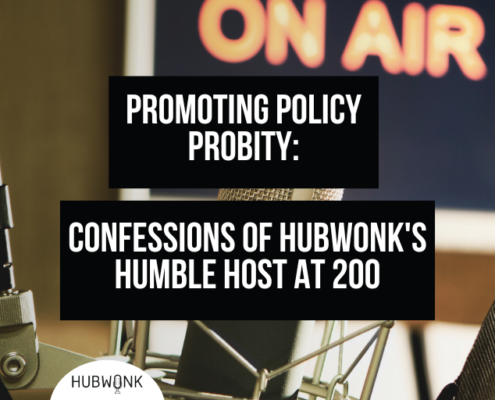
Promoting Policy Probity: Confessions of Hubwonk’s Humble Host at 200
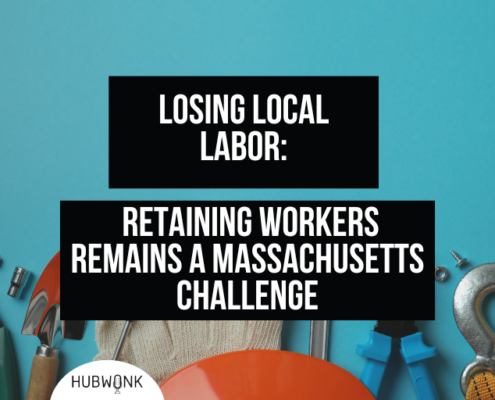
Losing Local Labor: Retaining Workers Remains a Massachusetts Challenge
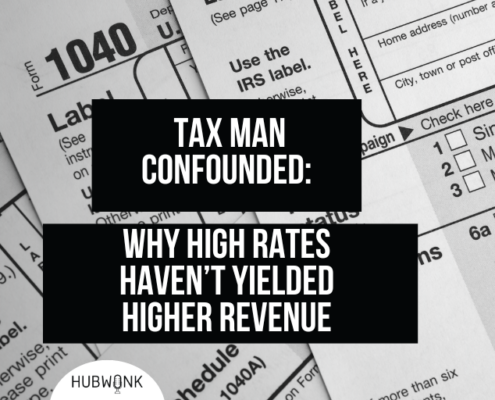
Tax Man Confounded: Why High Rates Haven’t Yielded Higher Revenue
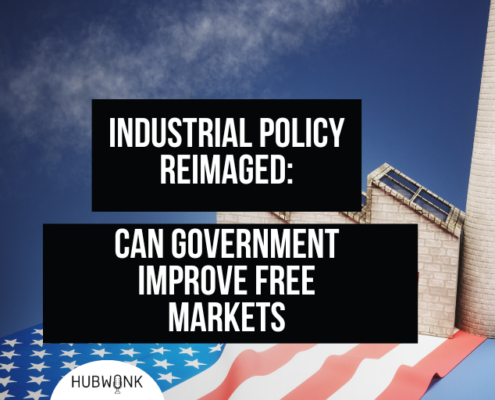
Industrial Policy Reimaged: Can Government Improve Free Markets
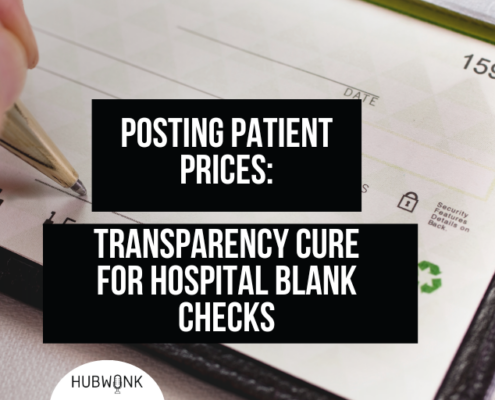
Posting Patient Prices: Transparency Cure for Hospital Blank Checks




